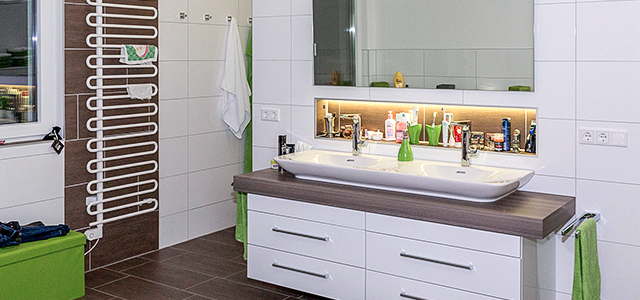
My heating doesn’t know what I want – An experience report
The days are getting shorter, the nights colder… winter is finally here. Suddenly the temperature has dropped, and heating systems across Europe awake from their slumber. Many homes are braced for another season of chilly homes and high heating bills and attentions turn to ways to keep heat in and costs down.
Loxone employee Andre moved into his new house a few weeks ago – a Loxone Smart Home (what else!). As you’d expect, everything is automated. Well, almost everything. Andre wanted to give the smartest heat pump on the market a chance to prove itself – without smart home integration. The heat pump is set to 19.8°C as the perfect room temperature and should adjust the room temperatures accordingly to meet this target temperature. But as he soon realised, what’s great in theory isn’t always great in practice.
The story:
It’s the beginning of November, the sun is shining, it’s a respectable 15°C outside, and inside Andre’s home, three of seven rooms are feeling rather tropical at a balmy 24.6°C – way above the target temperature. Andre closes the blinds to try to protect his home from further overheating from the winter sun streaming in. Unfortunately, on the other side of the house, the exact opposite is happening, and a small polar vortex is forming in the bathroom.
This doesn’t go down too well with Andre’s children, whose bedrooms were so hot and stuffy, sleeping is almost impossible, even with the windows flung wide open.
Since moving in, Andre has been sitting in front of the distributor, trying to find the right “mix” and tirelessly adjusting the pump valves. Because of the inertia of the underfloor heating, it’s several hours between Andre making the adjustment and him being able to determine the results. This proved to be a painfully slow process – opening or closing the valve slightly, waiting for half a day and seeing what happens. Tedium beyond compare. No wonder Andre was getting fed up.
With the valves in the children’s rooms as good as closed, and the valve fully opened in the bathroom, Andre explained the situation as follows: “The hot water must be in the pipes to the bathroom to cover the longest distances, while the kids are right next to the boiler room. I suspect that the supply temperature is probably too small for the way to the bathroom, while it is too high for the children…”

After weeks of suffering Andre is now controlling his heating with Loxone Valve Actuator Airs. There are no longer icicles in the bathroom, and the temperature in his children’s bedrooms in now snug rather than stuffy. The quality of living has increased, regardless of how warm or cold it is outside or how much the sun is shining.
Andre’s situation is not unique – there are so many homes all suffering with the same problem. With this case study we want to show that smart home technology isn’t just bells and whistles, but it really has tangible benefits, whether you opt for wired or retrofit.

Heating & cooling is just one aspect of a Loxone Smart Home, albeit one that often brings the most comfort and energy savings. The ability to bring together so many aspects of the home seamlessly, from lighting and heating to security and audio, is what makes a Loxone Smart Home stand out amongst the crowd.
Four more reasons why intelligent zoned heating makes sense
Maximum comfort
If nobody is at home, the heating is lowered automatically. If a room is used for longer than defined in the heating schedule, the heating will stay active automatically.
Save up to 6% on heating costs per degree
A degree up or down can considerably affect the heating bill. Without an intelligent system the regulation of the temperature is really complicated and a challenge. In the Loxone Smart Home you leave this task to the Miniserver and its sensors and actuators. In one of our projects the residents of an old building could save 1000€ heating costs per year.
The sun heats for 0 cents
By connecting all devices at the Loxone Smart Home the shading and heating is working together. The energy of the sun is used to bring the rooms to comfort temperature. To avoid the overheating of rooms, the shading is activated automatically.
Shading with insulating function
In the Loxone Smart Home the blinds and shutters make a contribution for insulating. Closed shades keep the cold out in the winter and lightens the workload of the heating.
Notifications when reaching setpoint values
The window in the storeroom is opened longer than planned? You’ll be informed long before wires are threatened by freezing, so you can react in time.
Find out more
You’d like to find out more about intelligent heating? Check out our website and contact a Loxone Partner near you.